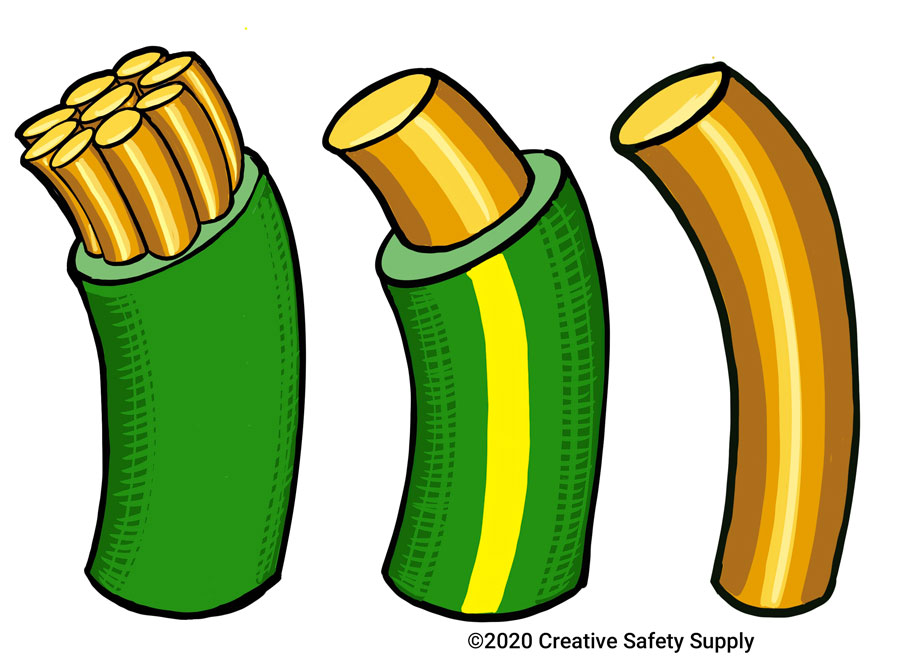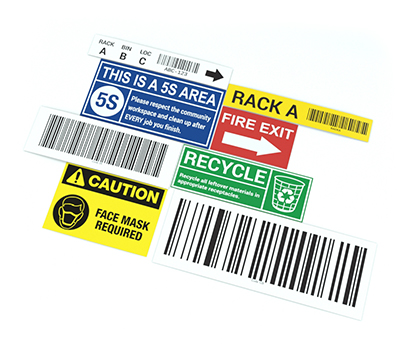
When your business is working on electrical systems, it is important to learn what each of the different wires is so you can stay safe. For instance, most systems include three separate wires, each of which are color-coded. The wires in these setups are the hot wire, the negative wire, and the ground wire. The ground wire is often the one that people know least about. While not required for operation, the purpose of the ground wire is to reduce the risk of shock and keep the electrical current stable. If an electrical system has a surge of extra energy because of a lightning strike, a malfunction in the device, or any other reason, the ground wire provides a path for that power to be dispersed safely. The wire gets its name from the fact that these wires often lead directly into the earth, where the electricity is safely dispersed. In many modern systems, however, the wire just connects back to the circuit box so the current can return into the system.
How to Identify the Ground Wire
In systems that follow standard wiring practices, you will find that the wire is going to be one of several different colors, depending on the type of system. The color standards for ground wires are as follows:
- Green – In the USA, most ground wires will be green, or at least primarily green.
- Green & Yellow – Some systems will use a green wire with a yellow stripe for the ground.
- Bare – If the wire is not primarily green, it may also just be a bare copper wire.
Whenever you are connecting wires in a system it is important to only connect the ground wire to another ground wire, or directly into the ground. Never have the ground wire touching an exposed hot or neutral wire or it will give the current an alternative path to travel, which could cause problems with the device being powered.
Is the Ground Wire Hot?
When a system is working properly, the ground wire will not have any electrical current traveling through it. This wire is only in use when there is a fault of some sort. It should never be assumed, however, the wire is safe to touch unless you have taken appropriate steps to disconnect it from any electrical power source. This wire could become energized at any point when it is connected to a live system.
Additional Ground Wire facts:
- The ground wire is typically coded with a green or bare copper color. This is done to easily distinguish it from the other wires in the system. In some cases, the ground wire may also be coded with a yellow or green-yellow stripe. Source: https://www.jyfs.org/what-color-is-the-ground-wire-on-a-household-circuit/
- The color coding of the ground wire serves as a visual cue to identify it quickly and easily. It also helps to prevent accidental connections or shocks by ensuring that the ground wire is not confused with a live or neutral wire. Source: https://www.thespruce.com/electrical-wire-color-coding-1152863
- The ground wire is a conductor that provides a safe path for excess or faulty electrical currents to flow into the earth. It acts as a shock absorber that protects people and equipment from electrocution or fire hazards. Source: https://www.angi.com/articles/what-do-electrical-wire-color-codes-mean.htm
- The ground wire is connected to a grounding rod, which is a metal stake that is driven into the ground near the main electrical panel. The grounding rod provides a low-resistance connection to the earth and dissipates the unwanted currents safely. Source: https://www.thespruce.com/electrical-wire-color-coding-1152863
- The ground wire is also connected to the metal cases or frames of appliances, devices, and outlets that have a potential to become energized. This creates a bond between the ground wire and the metal parts, ensuring that they are at the same voltage level and preventing any shocks or sparks. Source: https://www.thespruce.com/electrical-wire-color-coding-1152863
Similar Questions
- What does it mean to ground a wire?
- What are ground wires?
- What is the gray wire color used for?
- How are neutral wires identified?
- What are wire color codes?
- What does the neutral wire do?
- How can wires be tested to tell if it’s hot?
- What’s the difference between a positive and neutral wire?
- Is the black wire the hot wire?

